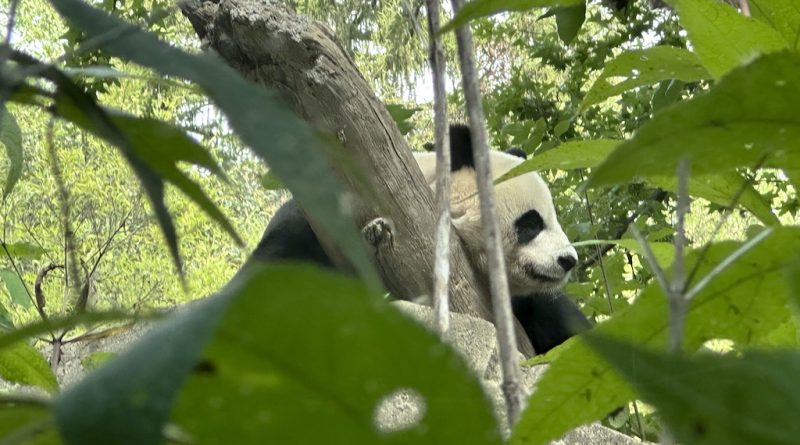National Zoo’s iconic pandas to go to China without replacements
By ABBY WALLACE and RYAN MERCADO
WASHINGTON — The National Zoo’s three resident pandas are scheduled to return to China by Dec. 7, leaving one of the most popular attractions in the nation’s capital without its iconic bears for the first time in over 20 years.
The pandas are leaving the National Zoo due to the expiration of the cooperative breeding agreement with the China Wildlife Conservation Association. The departures come amid strained relations between the United States and China.
“Our team is still in conversation about what the future of our panda conservation program is going to look like,” said Ellie Tahmaseb, spokeswoman for the Smithsonian’s National Zoo & Conservation Biology Institute, told Capital News Service. “We’ve been doing panda conservation for the past 51 years, both with the pandas here at the zoo and pandas in China. And we will be continuing that program, whether there are pandas physically here in D.C. or not.”
The National Zoo currently has an adult male, Tian Tian, and an adult female, Mei Xiang, and their son, Xiao Qi Ji. Tian Tian, whose name means “more and more” in Mandarin Chinese, is 26. Mei Xiang, whose name means “beautiful fragrance” is 25.
The pair were born and raised at the China Research and Conservation Center for the Giant Panda in Wolong, Sichuan Province; they arrived at the National Zoo in 2000.
Mei Xiang and Tian Tian have had seven cubs, four of which, including Xiao Qi Ji, have survived to adulthood.
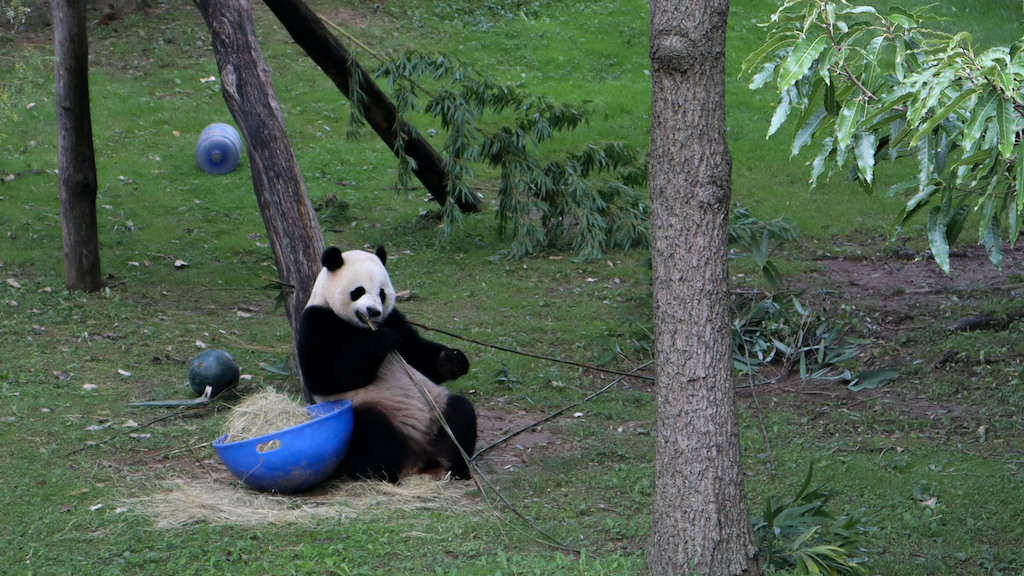
Each successful panda birth at the National Zoo was through artificial insemination. Xiao Qi Ji’s surviving elder siblings were returned to China in the 2010s under the Giant Panda Cooperative Research and Breeding Agreement with the China Wildlife Conservation Association. The agreement requires that all panda cubs born at the National Zoo must be sent to China by the time they turn four.
Xiao Qi Ji, whose name translates to “little miracle,” was born in August 2020. Mei Xiang was 22 when she gave birth to him, making her the oldest giant panda to give birth in the United States.
Xiao Qi Ji is the youngest panda still in the country, and he will likely be the last panda born in the United States for the foreseeable future. Upon his arrival to China, he will enter into a breeding program.
The initial 10-year agreement with the China Wildlife Conservation Association began in December 2000 when Mei Xiang and Tian Tian arrived at the National Zoo and has been renewed three times since 2010.
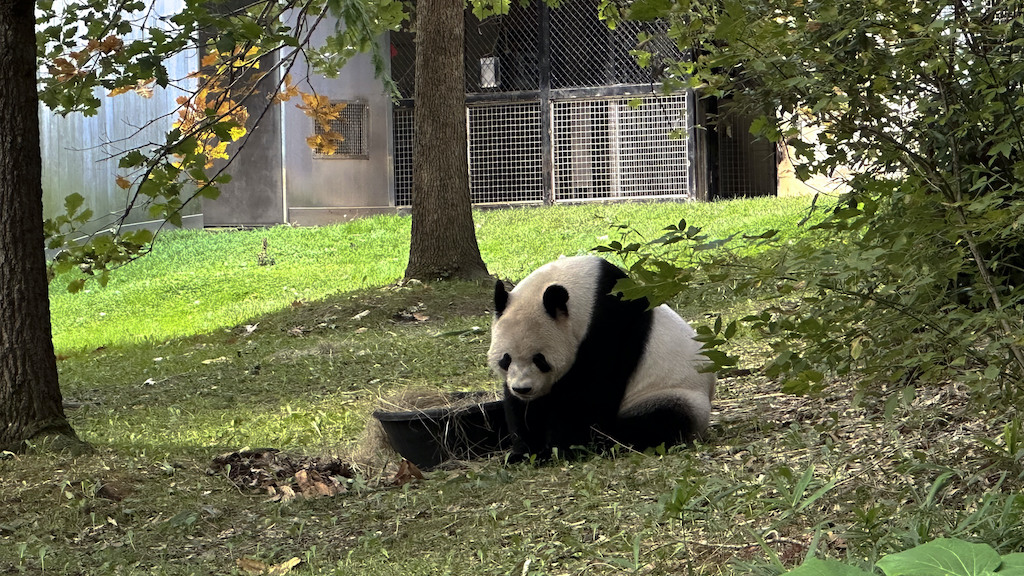
Conservation efforts around the globe have proved so successful that in 2016, the International Union for Conservation of Nature upgraded the giant panda from “endangered” to “vulnerable.”
An estimated 1,864 giant pandas live in the wild in central China, and an additional 600 are in zoos and breeding centers around the world, according to the Smithsonian.
When it is time for Mei Xiang, Tian Tian and Xiao Qi Ji to leave the National Zoo, the pandas will board a FedEx plane for an approximately 16-hour flight with a National Zoo veterinarian and panda keepers, according to Tahmaseb.
On the flight, the pandas and staff will bring supplies for the bears that includes food and enrichment activities. Upon their arrival, Mei Xiang, Tian Tian and Xiao Qi Ji will move into giant panda bases managed by the China Wildlife Conservation Association. It is unknown if the three will stay together.
“I think it’s very bittersweet,” Tahmaseb said. “You know, we have some staff, in particular, a panda team, who have been working with these animals for decades, in some cases. And so I think it’s pretty hard, right?”
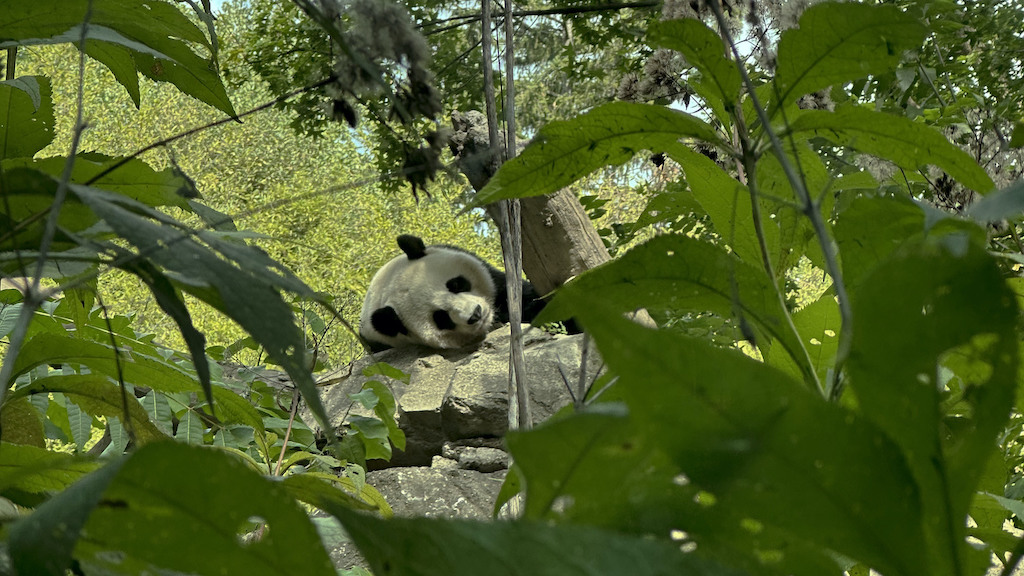
Dawn Ginnetti, a Washington resident and George Washington University employee, took in the pandas with her friend Shannon Whitaker during a National Zoo celebration dubbed “Panda Palooza: A Giant Farewell” during the last week of September.
“When you come here, and you see a panda, you think, ‘I want to conserve their environment. I want to preserve that. I want them to be around. So, what can I do?’” Ginnetti said. “So, it really makes people think about the planet in a different way.”
Whitaker, a photographer and Tallahassee, Florida resident, said her favorite memory of the pandas involved bringing her three daughters up from Florida to see the bears in the winter.
“We watched all the pandas come out and sit in the snow, and they were just so inquisitive about the weather,” Whitaker said. “It was just really beautiful. And to see my children and all the other children and adults, just in awe of that beauty.”
Tahmaseb started working at the National Zoo in February and got to celebrate each of the pandas’ birthdays this year. While marking Tian Tian and Mei Xiang’s birthdays, she began doing the math and realized these were the same pandas that she saw while visiting the National Zoo as a child.
“That was sort of a fun realization of being like, oh my gosh, these are the exact same bears that led me to love zoos as a child,” Tahmaseb said.
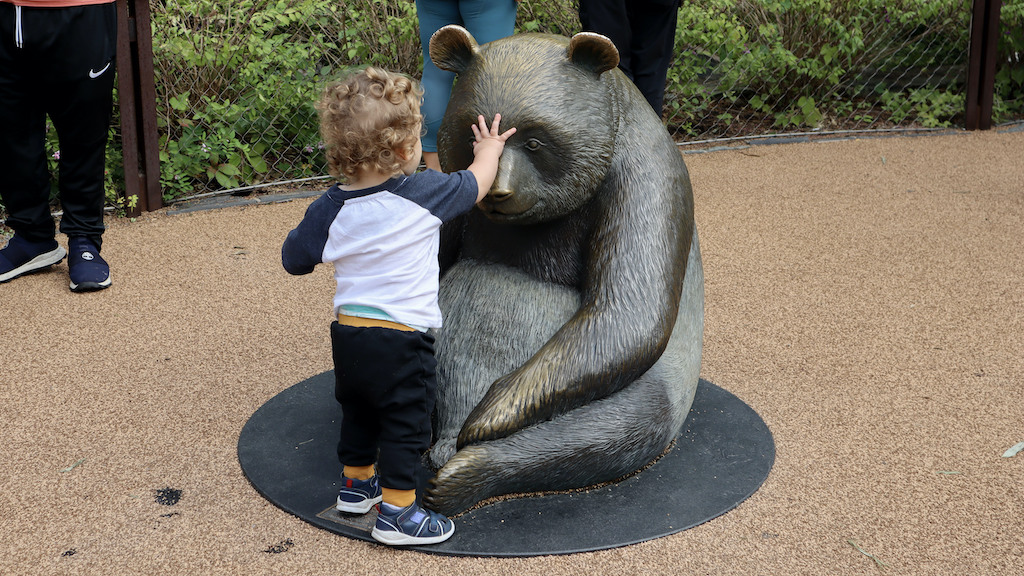
Bronwen Hale Dearden, a caregiver from Loudoun County, Virginia, and her children were delighted to spend a weekday morning admiring the pandas. Despite living close to the nation’s capital, she had never seen the pandas with her kids.
“I mean, it’s definitely sad,” Hale Dearden said. “I know, like my mother-in-law, and a lot of my friends are like, ‘We’re gonna go! We need to go so many times!’”
“It is a little sad because it seems like it’s a symbol of our relationship with China, you know? To a certain extent.” Hale Dearden said. “The withdrawal of the pandas, even though I know the official policy is that it’s nonpolitical, it feels like it’s maybe a little weighted.”
China’s leasing of pandas to other countries as a diplomatic tool came to be known as “panda diplomacy” and formally dates back to the 1950s.
Nearly every panda in the world is considered Chinese property. Leasing them out is seen as a gesture of goodwill to other nations and a way to broaden conservation efforts for the species.
Pandas first arrived at the National Zoo in 1972 as a gift from Chinese Premier Zhou Enlai to commemorate President Richard Nixon’s historic visit to communist China, the first by an American president.
At a gala during the visit, then-First Lady Patricia Nixon mentioned her fondness for pandas to Zhou: “Aren’t they cute? I love them.”
The premier responded with, “I’ll give you some.”
After that, arrangements were made for a pair of pandas, Ling-Ling and Hsing-Hsing, to be loaned to the National Zoo.
Pat Nixon accepted the bears on behalf of the American people and joked that “pandamonium” would break out at the zoo.
Ling-Ling and Hsing-Hsing lived out the rest of their lives at the National Zoo.
On Dec. 30, 1992, Ling-Ling succumbed to heart failure at 23. Hsing-Hsing passed away on Nov. 28, 1999, at 28. That was the only time in the last 51 years that the National Zoo did not house pandas until Mei Xiang and Tian Tian arrived the following year.
“There was a period between 1999 and 2000 when we didn’t have pandas here at the zoo. I think a lot of people forget about that,” Tahmaseb said. “But you know, just because we didn’t have pandas physically here in D.C., didn’t mean that we weren’t gonna be having them again in the future.”
Over the past four decades and through 10 presidencies, U.S.-China diplomatic relations have been warm and cool, but panda diplomacy has remained constant. However, those relations have entered a much cooler phase in recent years.
“(Donald) Trump, rhetorically, was very harsh on China… with COVID, with trade,” said Dr. Scott Kastner, a University of Maryland political science professor.
Trump launched an economic trade war against China, imposing tariffs on billions of dollars of imports from that nation. The Biden administration has maintained those tariffs.
In April 2022, then-House Speaker Nancy Pelosi, D-California, visited Taiwan. Beijing took great offense, claiming Taiwan is a rebellious breakaway province.
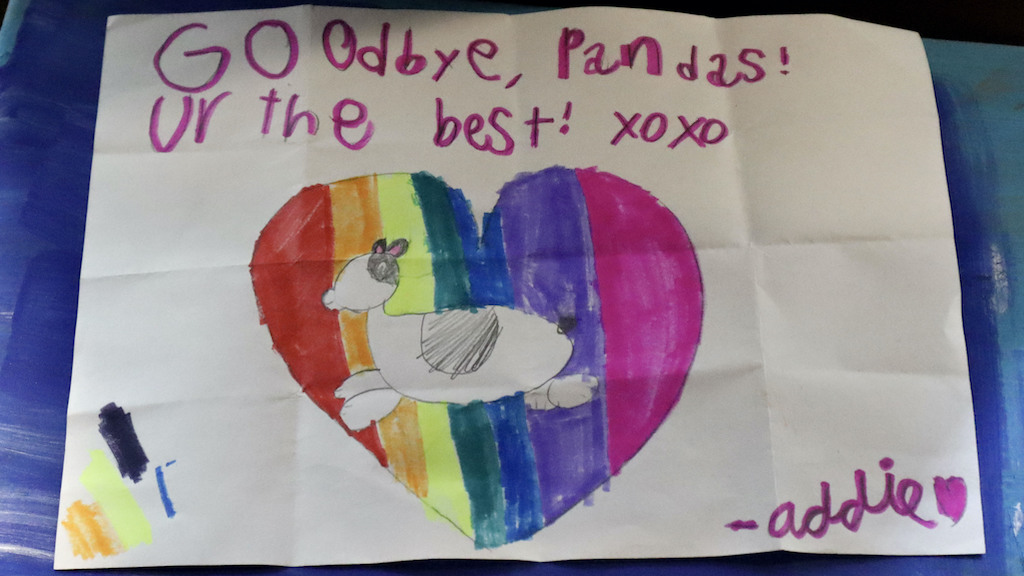
In January, a Chinese balloon appeared over the United States that the Biden administration ordered shot down. U.S. intelligence officials say the balloon was capable of gathering sensitive American military information.
“For the Biden administration, I think it has been tougher on sanctioning and also being pretty serious about trying to kind of compete with China,” Kastner said.
The pandas’ departure from the National Zoo is part of a panda exodus from American zoos.
The San Diego Zoo returned its pandas in 2019; the Memphis Zoo returned its panda earlier this year.
Once the National Zoo’s pandas leave, Zoo Atlanta will be the only facility in the United States housing the animals. However, Atlanta’s four pandas are expected to return to China next year when the zoo’s loan agreement expires.
There still is no official date for the National Zoo’s pandas to return to China, but it must occur by Dec. 7, when the agreement expires.
“Just because there may not be pandas at the zoo, whether that’s for a short period of time or for an extended period of time, doesn’t mean that we are not committed to continuing our panda conservation work,” Tahmaseb said.
The National Zoo has trained over 1500 professionals in panda conservation and built a research framework for breeding and reproductive support in the wild.
“We are very hopeful for the future — both here at the zoo and for pandas in the wild,” Tahmaseb said.
The National Zoo is anticipating a “bit of a downturn” regarding attendance and merchandise sales after the departure, according to Tahmaseb. The facility will also stop using pandas in advertising campaigns and begin to focus more on other species that call the National Zoo home.
As for the National Zoo’s panda keepers, many of them will begin working with different animals on the Asia Trail.
“There’s plenty of other animals… nobody’s going to be losing their job over this,” Tahmaseb said.
The David M. Rubenstein Family Giant Panda Habitat was last renovated in 2007 and will remain vacant after the departure.
“We’re going to be putting in some renovations that we have discussed with our colleagues on the Chinese side,” Tahmaseb said. “Upgrades that we are going to be making, further suggestions to make sure that the habitats are as ready to go for pandas in the future, as we are hoping to have them again.”
As Washington prepares to say goodbye, zoo guests hope it isn’t forever.
“If we can get them back,” Hale Dearden said. “Bring them back!”

Capital News Service is a student-powered news organization run by the University of Maryland Philip Merrill College of Journalism. With bureaus in Annapolis and Washington run by professional journalists with decades of experience, they deliver news in multiple formats via partner news organizations and a destination Website.

